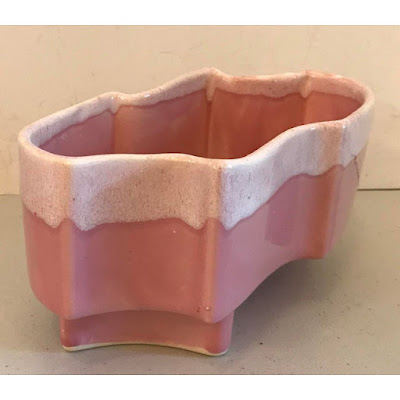Second Hand Rose: Shopping Thrift Stores
"I'm wearing second hand hats
Second hand clothes
That's why they call me
Second Hand Rose... "
In 1965 Barbra Streisand made this 1920s Broadway song, Second Hand Rose popular again. When I think of second-hand shopping, I think of the song, Second Hand Rose.
Shopping at thrift stores or even flea markets to save money hasn't been my motive, but more about the hunt for a good treasure. Some of my great finds have been a brand new still-in-the-box Melita hand-drip coffee pot for $4 which typically is sold for $12 -$15. Iron skillets and copper bottom Revereware for a few dollars. Where ever there is a stack of old plates, I will be there reading their backs looking for Johnson Bros, Limoge, Franciscan, Chinoiserie-design pottery in red, and most any transferware or ironstone made in England. Same with pottery vases and bowls looking for the etched in "California USA, Hull, and McCoy."
This hunt for old dishes was inherited. It's in my blood as I remember a magical assortment of beautiful old mixing bowls and plates in my grandmother's kitchen cupboards. She only shopped the expensive department stores for everyday basics like grandpa's socks, pillowcases, fabric for a new house dress, a pair of earrings, and ended her journey at the thrift store looking for old kitchenware.
Old tin cookie cutters and colanders will also make me take a second look. However, I will say some of these labels on the porcelain and pottery are getting harder to find and not always a bargain.
Being a woman who lives in wine country, in the area thrift shops around me there is often one shelf filled with affordable souvenir wine glasses from various wineries, so if you're a collector or just starting out needing some barware, consider thrift shops.
So, what do I do with these treasures? Sometimes I keep them, gift them to another collector, and sometimes I will resell and make a few dollars for my time of cleaning the item up, tagging it, and hauling it around until it sells.
In the last five years, there has been this trend at online living/decor magazines with a theme of telling those of the Boomer era that no one wants our "old things" - and something tells me that the person writing it is not of the Boomer era. In the same breath, there are articles shouting out to the Boomer generation that we are the cause of the eroding environment and climate change. Yeah, and the Boomers also gave you the annual "Earth Day" on April 22, 1970, as a way to demonstrate support for environmental protection. But here's the deal - and I have printed this before...
Who is buying the cheap cardboard-like furniture from Target and IKEA? Per capita, it isn't the Boomers, but the youth who are writing the articles blaming the Boomers for the environment gone bad. Irony much?
The age bracket that IKEA targets are consumers between the ages of 20 and 34. After people reach the age of 34, the numbers that shop at IKEA drop off dramatically. Target focuses its marketing strategies primarily on younger customers, people between 18 and 44. This age bracket makes up about 60% of Target's shoppers. The quality of this furniture, household goods, and trends are what I often refer to as "throwaway." Now if you're telling people they are the cause of your uncomfortable environment while you're sitting on a piece of "assembly-required" furniture that will be headed to the landfill after a year, then who is the real problem?
HELPFUL HINTS: When shopping second-hand. First of all, it's important to remember that patina and rust can be a good thing. It's part of what drew you to the item, to begin with, so why would you want to remove it? Live with it for a while before you decide to bring out the chartreuse-colored spray paint.
If you really want to discover treasures, then you have to be consistent. Pick one day a week and make your favorite thrift shops a weekly or semi-weekly journey.
Mind your manners when visiting a flea market or estate sale. As soon as the event opens, don't go in demanding vendors to lower their prices. No. It doesn't work that way. If you want a lower price, go back later in the day or perhaps the second day of the sale and then do some polite "negotiating." Also, if you talked the vendor into lowering their price on an item from $20 to $5, don't give the vendor a $20 dollar bill or a debit/credit card leaving them to eat a service fee or taking the time to count you out change. Keep some small bills in your pockets and be prepared to give them the exact change you bargained for.
Thrift shopping and flea markets can be a family event when you give the kidlets something to focus on such as adding a trinket or a book to a collection or possibly starting a new collection. Give a set amount of dollars so they also learn how to budget. When raising kidlets, I did this often as one hunted for whimsical-looking salt and pepper shakers and the other in search of old comic books.
Just remember to be kind to vendors and other customers, put things back where you found them if you change your mind, have some idea of what you are going to do with your treasures, and make sure they will all fit in your car!






Comments
Post a Comment